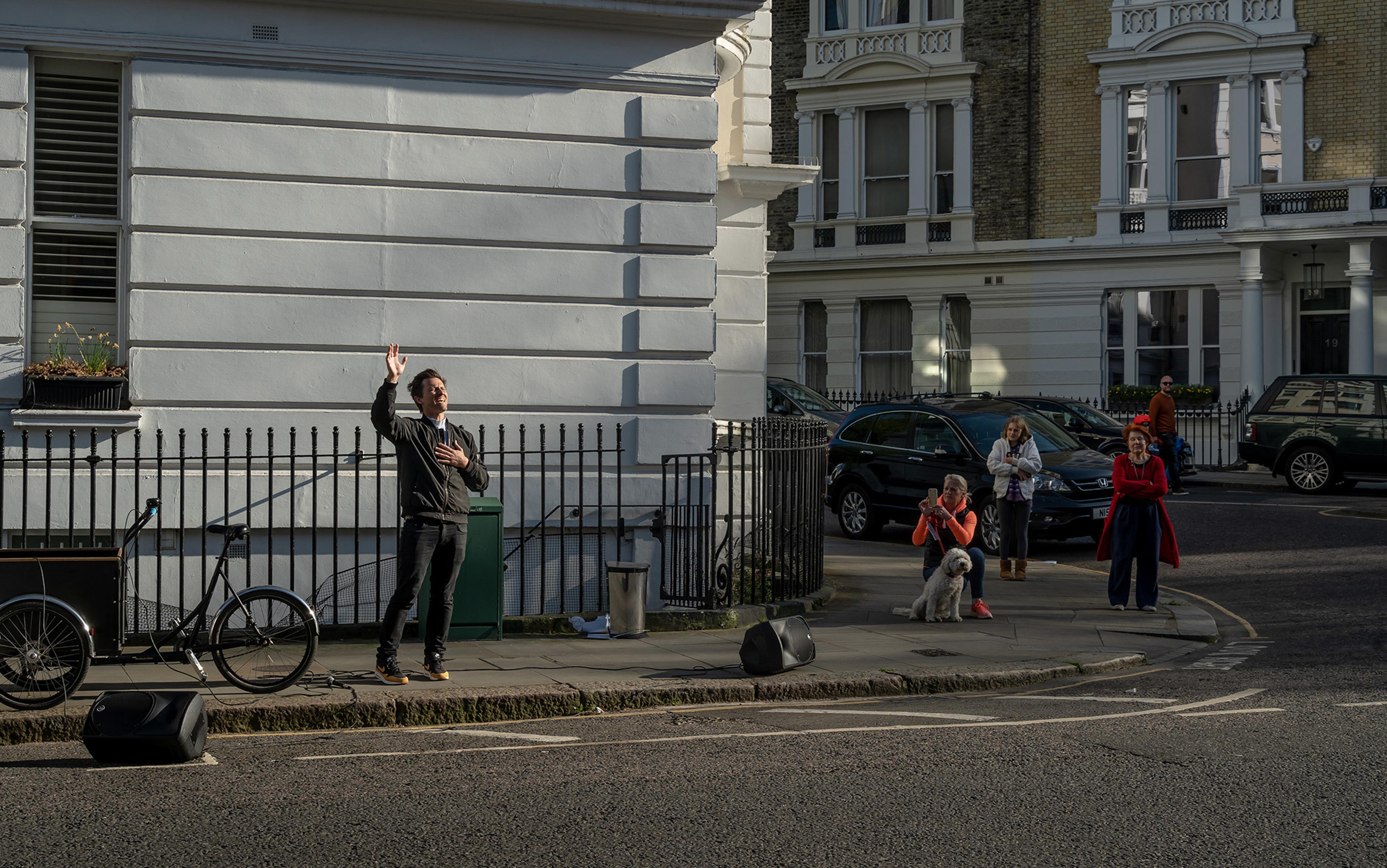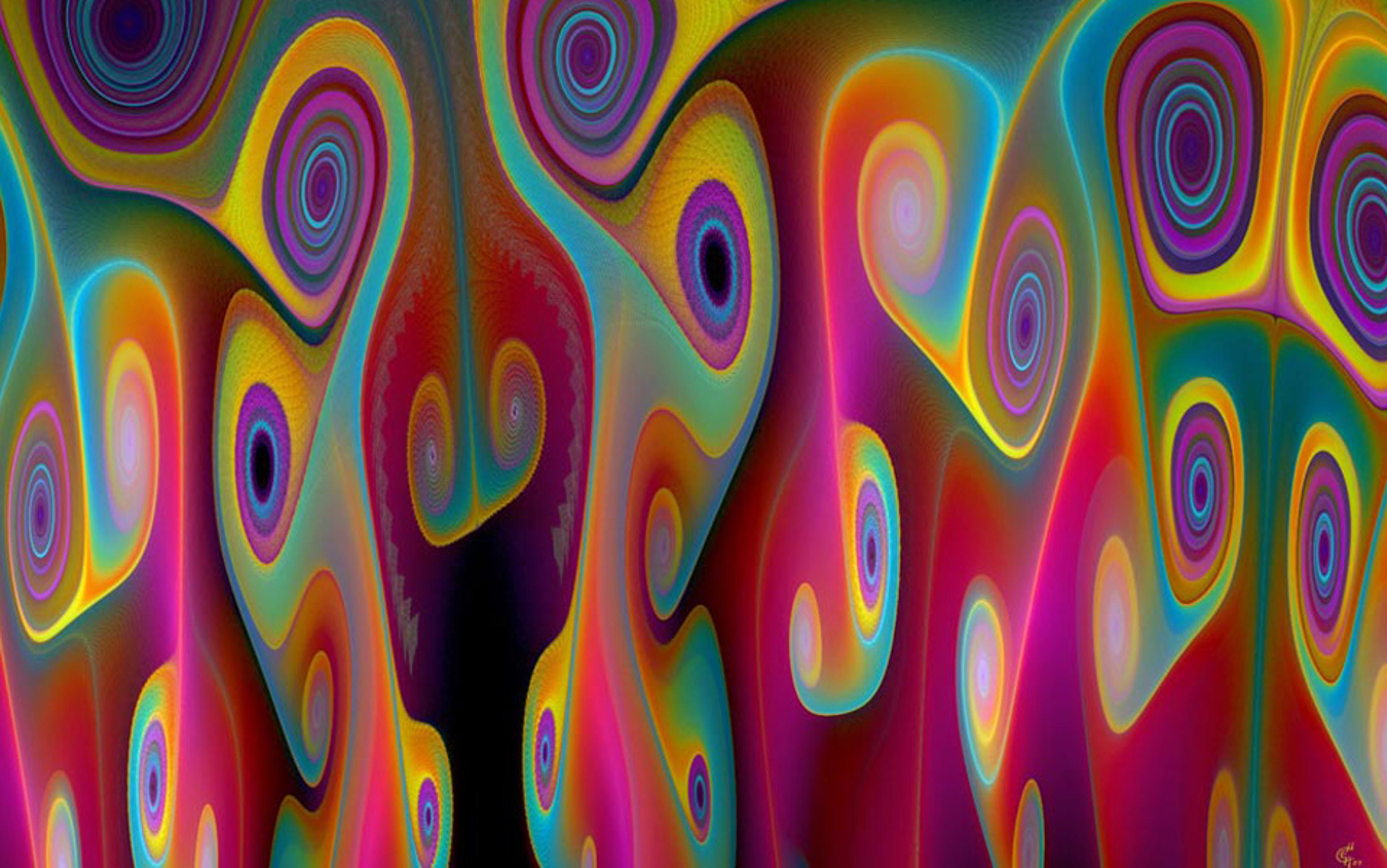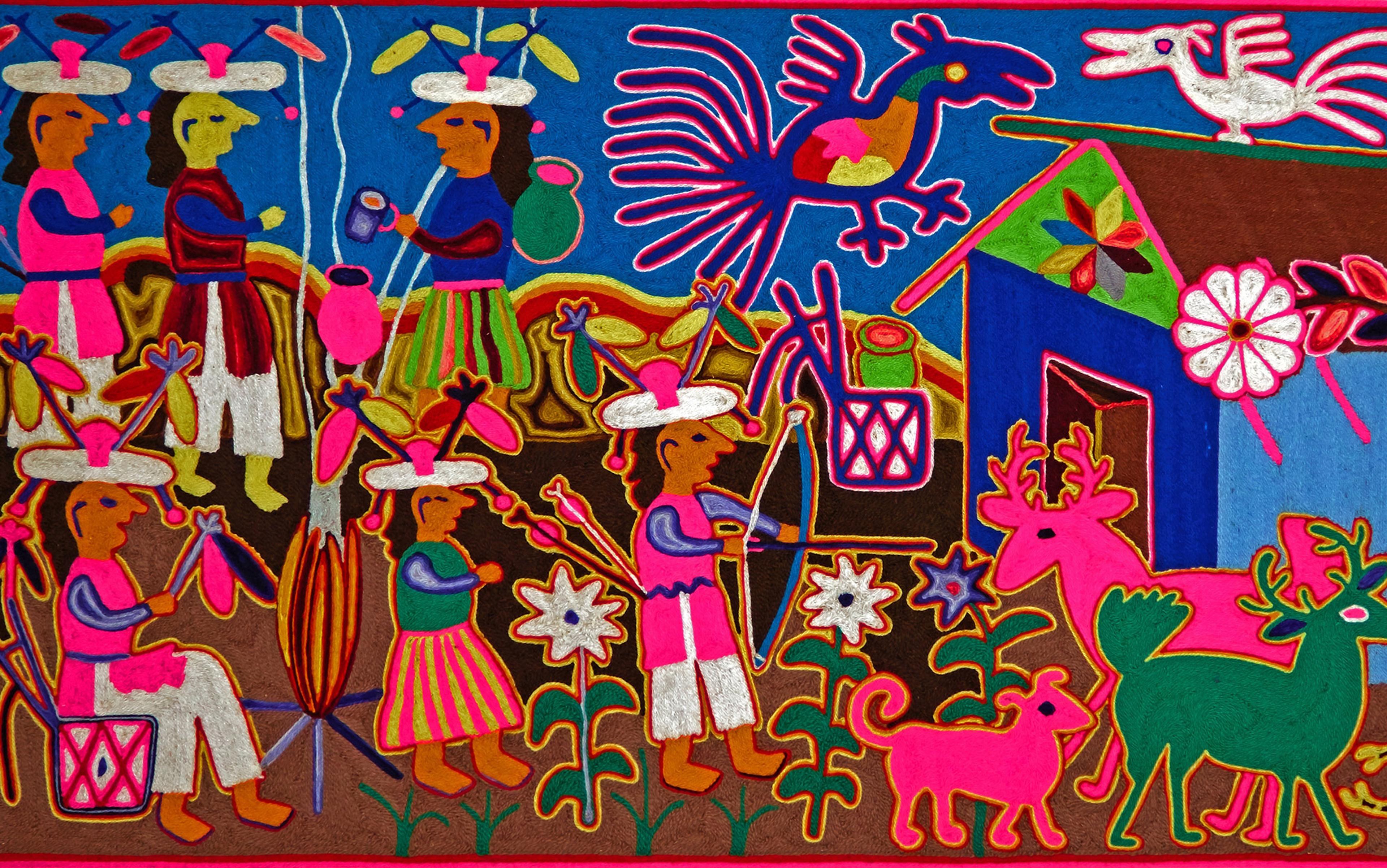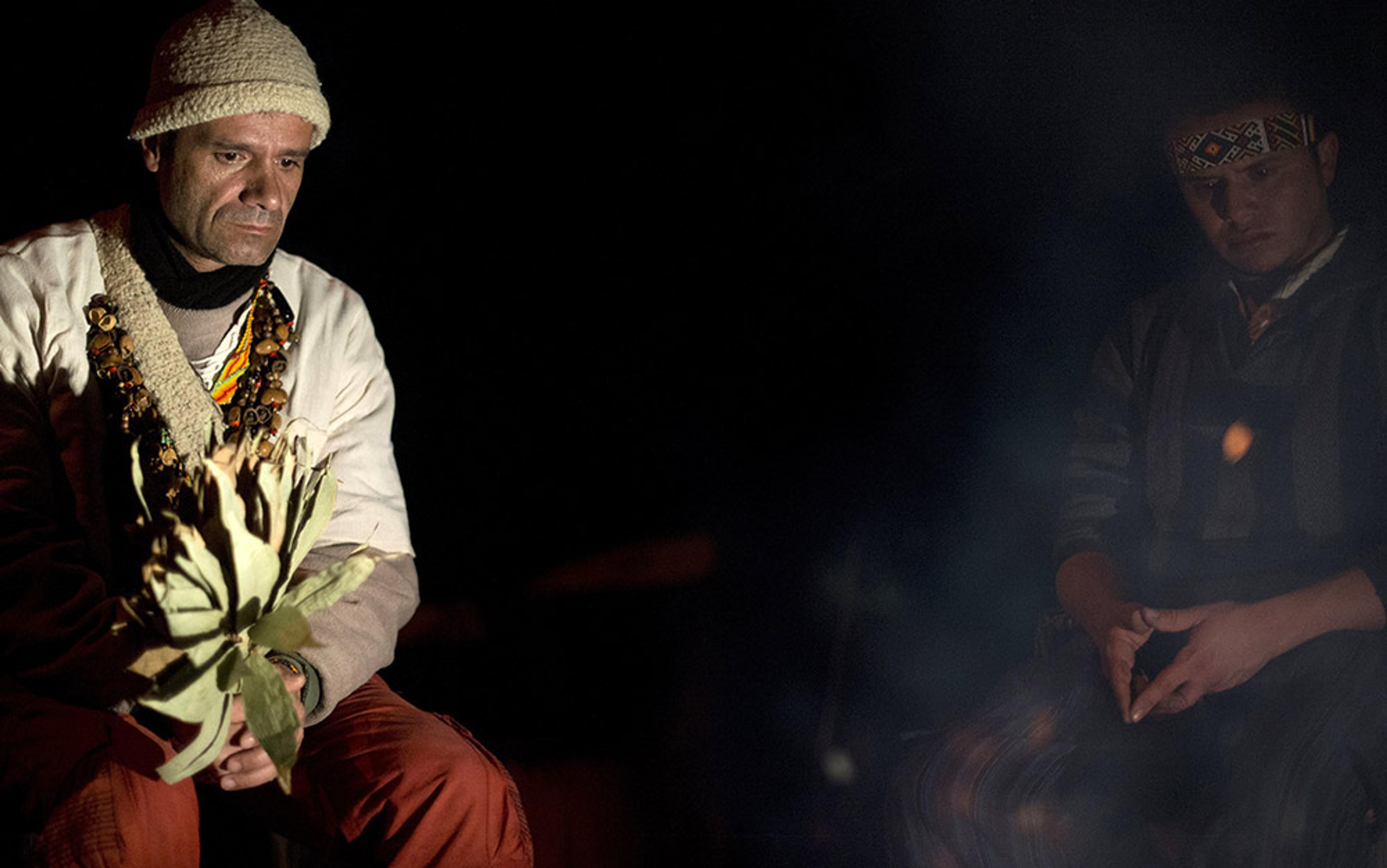‘A sense of special significance began to invest everything in the room; objects which I would normally accept as just being there began to assume some strange importance.’
‘I became interested in a wide assortment of people, events, places, and ideas which normally would make no impression on me. Not knowing that I was ill, I made no attempt to understand what was happening, but felt that there was some overwhelming significance in all this …’
The first of these quotations is from an individual describing a psychedelic trip they took after taking peyote. The second is a person describing an experience of psychosis. While rarely looked at together today, experiences of psychedelics and psychosis share a lot of subjective territory. In the past, some scientists considered them to be different versions of the same experience. However, today, experiences of psychosis and psychedelics are seen as radically different. Examining the journey from that past approach to the current perspective reveals a great deal about our assumptions and values, and the limits and biases of the current day.
In the mid-20th century, researchers thought of psychosis and psychedelics as deeply entangled, and scientific comparisons between the two experiences were common; entire academic papers were spent contrasting detailed descriptions of experiences of patients diagnosed with schizophrenia and experiences of research participants who had taken psychedelic drugs. As a result of the close resemblance between these descriptions, many researchers believed that psychedelics induced a short-term psychosis, providing a perfect scientific model for those who wanted to learn more about schizophrenia. By inducing a ‘temporary psychosis’, researchers could observe biological changes in research participants who had taken a psychedelic, and compare these with measurements of patients diagnosed with schizophrenia. In the hunt for the mysterious ‘substance-M’ that could explain what was underlying both experiences, various candidates were considered, including adrenaline, norepinephrine and serotonin. While the hunt for a common biological factor was unsuccessful, for decades many believed that these experiences were different versions of the same thing.
There was widespread scientific belief in the similarity between psychosis and psychedelics in the mid-20th century. But the years since have led to a remarkable divide between our understandings of these phenomena. In the 1960s, moral panic related to psychedelic drugs set in. At the same time, requirements for evidence in medicine were becoming more rigorous, and creating barriers for psychedelic research. Funding, access and permissions for research related to psychedelic drugs slowly dried up, and research into these fascinating substances was largely forgotten by psychiatry.
In the intervening decades, research related to psychosis has continued unfettered and changed shape radically. Gone is much mainstream interest in detailed descriptions of the experience of psychosis that psychoanalytically trained psychiatrists often sought out in the past. Instead, psychosis research today shares with the rest of psychiatry an often singular focus on neurobiological and genetic research. Investigations related to childhood, trauma and social forces are given much less consideration and, importantly, much less funding. Psychoanalysis has fallen out of favour, in part because of the difficulty it had fitting into novel models of evidence being adopted across medicine (it’s difficult to conduct randomised control trials on the talking cure), and in part because psychiatry needed to prove it was consistent and replicable (these are challenging features to demonstrate in an approach as complicated and variable as psychoanalysis). In its place, a neurobiological model of psychiatry has been taken up, seeking explanations and treatments for mental disorders largely at the level of genes and neurotransmitters.
This approach is most apparent if we look at where money for psychiatric research flows. In the past two decades, the US National Institute of Mental Health, the largest funder of mental health research in the world, has introduced a new framework for research, the Research Domain Criteria, or RDoC. This framework is composed of domains and units of analysis. The domains include psychological phenomena like perception or a sense of acute threat, similar to symptoms, but including both positive and negative aspects. The units of analysis focus on things like genes, cells and circuits, directing researchers where to look to explain psychological phenomena like a sense of acute threat, in order to better understand both a well-functioning and a disordered response. The framework aims to do away with the issues and problems that the DSM (Diagnostic and Statistical Manual) is known for, including the way that many of the psychiatric categories within it include overlapping symptoms, or the many possible symptom profiles that can lead to a single diagnosis. These issues suggest that research relying on the DSM categories may not reflect real categories, which makes room for a lot more noise in the research process. The hope is that RDoC will provide more promising paths for research, particularly at the level of the brain and genes. Given this focus, it is no surprise that, within psychiatry today, experiences of hearing voices or of hallucinations are largely seen as symptoms to be managed, or ideally removed, rather than experiences that can be both challenging and meaningful.
Meanwhile, after many years of hiatus, a resurgence of psychedelic research is taking place. Dedicated labs have popped up at Johns Hopkins University in Baltimore, Imperial College London and a number of other institutions, and research into the potential of psychedelic-assisted therapy to treat various mental disorders is charging forward. Conditional approval for patients with a terminal diagnosis who are seeking to relieve end-of-life anxiety through the use of psilocybin-assisted therapy has already been granted in many jurisdictions (including within the United States and Canada). The US Food and Drug Administration designated the use of MDMA-assisted therapy as a breakthrough in 2017, and Phase 3 trials for those experiencing post-traumatic stress disorder have been completed. A number of trials have looked at the potential of giving trial participants psilocybin or ketamine along with therapy, in hopes of improving their experiences of treatment-resistant depression. Others are looking into the potential of ibogaine to help those with substance use issues, or of psilocybin for smoking cessation. Still others are considering whether microdosing might promote creativity or whether psychedelic-assisted therapy can help those suffering as a result of racial trauma.
In order to appease regulators, the medical community and potential patients, psychedelic research must overcome its problematic past associations and demonstrate that psychedelic therapy can fit the mould of evidence-based medicine, no small feat for a class of drugs that are infamously difficult to pin down. As a result of these pressures, any association between psychedelics and psychosis is a dangerous one. Indeed, Rick Doblin, the founder of the influential Multidisciplinary Association for Psychedelic Studies (MAPS), has suggested that references to psychedelics as models of psychosis should be abandoned because they imply that ‘psychedelic experiences can be discounted as crazy and distorted’.
Of course, experiences of psychosis and psychedelics are not identical. Crucially, there are fundamental differences related to the voluntary nature of the experience as well as the timeline. In most cases, psychedelics are ingested by choice and their effects last only a number of hours. In contrast, experiences of psychosis usually come about without any willingness on the part of the individual, and can last for days, weeks or months. Subjective experiences are not identical either; even in the past century, some researchers noted that hallucinations and synaesthesia – when multiple senses are experienced simultaneously – are often more pronounced in those who have taken psychedelics than in those experiencing psychosis. Others thought the similarities between these experiences were exaggerated.
At a neuroscientific level, there has been continued interest in the relationship between experiences of psychedelics and psychosis. It is still common to use psychedelics to model psychosis in animals, but the generalisation of this research to human beings is contested by some scientists. Others have been interested in the ways in which the same receptors (for serotonin, dopamine, opioid) play a role in experiences of both psychosis and psychedelics. It has also been suggested that early stages of psychosis involve a similar neurobiological state to the one brought about by psychedelic drugs.
Yet today scientific approaches to these phenomena are far apart. Psychosis research has developed along with the rest of psychiatry into a largely biomedical science, seeking genetic or neuroscientific explanations for the symptoms associated with the experience. Psychedelic research has taken a different path, and still carries with it a variety of features that were present within investigations of these substances nearly 75 years ago. Among other things, the divergence reflects the assumptions and values guiding each field. A little bit of cross-fertilisation is warranted again.
Research related to psychosis has little interest in the meaning or mysticism that may arise
While we might accept that experiences of psychosis and psychedelics are different in important ways, we might also acknowledge that their phenomenological (‘what it’s like’) similarities make them worth looking at in tandem. Both kinds of experiences are highly variable, but can involve a number of overlapping psychological and physical sensations, including changes in sensory experiences related to vision, hearing and smell, as well as one’s sense of self, as ego dissolution and depersonalisation are common. A variety of emotional responses are also common across psychosis and psychedelics, including feeling paranoid, scared, euphoric or withdrawn.
Examining how a science approaches its targets of investigation can be highly revealing of assumptions and values guiding the field. As such, looking across the radically different research programmes related to psychosis and psychedelics today can show us how our beliefs and goals related to psychosis and psychedelics differ, and give rise to these contrasting approaches. In turn, we can learn important lessons about how to understand, and respond to, psychosis from approaches to psychedelics.
Take what we choose to measure as an example. Psychedelic scientists often focus on meaning and mysticism, asking participants how spiritually significant their experience was, or whether they had an experience they ‘knew to be sacred’ or if they ‘felt at one with the universe’. Headlines frequently refer to research participants describing their psychedelic experiences as among the most meaningful in their lives, helping them cope with past traumas or face impending ones. This contributes to a view of psychedelic experiences as intense, but also meaningful and transformative.
In contrast, headlines related to psychotic experience focus not on the magical or ineffable qualities but rather the challenging and fearful aspects of the phenomenon. In part, this is because research related to psychosis has little interest in the meaning or mysticism that may arise within the experience. Instead, research overwhelmingly focuses on how to reduce symptoms and help individuals return to work or school. Research that looks closely at the qualitative aspects of experiences of psychosis, and makes space for individuals to share positive, negative and elusive components of such experiences, is quite rare.
Inevitably, these different focal points shape what scientists, and the public, see when thinking about psychosis and psychedelics. Psychosis often brings to mind delusions and hallucinations, characterised as symptoms that ought to be reduced at all costs. In contrast, the hallucinations induced by psychedelics may be seen as a way to access remarkable, life-changing experiences.
Another example can be found in the kinds of causal variables we look at in relation to psychosis and psychedelics. Research related to psychedelics expresses a considerable amount of interest in how experiences are impacted by various factors particular to the individual and the context they are in. The notion of ‘set and setting’, popularised by Timothy Leary, is widely accepted in psychedelic communities; it refers to how emotions, expectations and environment can have an enormous impact on psychedelic experiences. Ongoing research focuses on how factors like music and nature can influence psychedelic experiences.
Those experiencing psychosis are often met with restraint, seclusion and, far too often, violence
No parallel concept similar to ‘set and setting’ exists in psychosis research, which continues to search for the elusive physiological substance-M. Questions related to how psychosis is shaped by beliefs, culture, environments or relationships are rarely asked within psychiatry. Instead, the focus is largely on what causes psychosis and how it can be reduced, rather than what contextual features might give rise to more difficult or more positive experiences of psychosis.
Again, these differences are revealing and impactful. While psychedelic researchers understand that set and setting can make psychedelic experiences better or worse for individuals, psychiatrists studying psychosis spend little time considering how individual factors related to one’s set and setting might impact an experience of psychosis. Intervention tends to steer towards psychiatric drugs as the primary approach to treatment.
Perhaps the most alarming contrast is between how we currently respond to those having challenging experiences as a result of psychedelics or psychosis. Underground psychedelic communities have been developing forms of ‘psychedelic first aid’ for decades, approaches characterised by warmth and compassion, and that prioritise safety, comfort and nonjudgmental regard for someone having a bad trip.
In the journal Dancecult, Deirdre Ruane, a researcher at the University of Kent, Canterbury in the UK, describes the kind of care provided when a psychedelic trip at a festival becomes challenging. That support starts with ruling out an acute medical need and then making the festivalgoer comfortable, offering ‘water or tea and a private, low-stimulus space if desired’. Afterwards, ‘sitters remain with visitors, talking, listening or simply sitting quietly with the visitor as desired. The aim is to create an atmosphere of safety in which the visitor feels able to confront and process difficult emotions.’
Such a picture contrasts sharply with the usual responses to those having a challenging psychotic experience. Those experiencing psychosis, or other mental health crises, are often met with restraint, seclusion and, far too often, violence. Police with little training are often sent to respond with force to those in mental distress – very rarely, those in crisis are supported by peers who know what it’s like and what might help, or even professionals who have been trained in empathic and nonviolent forms of care. The tragic case of Daniel Prude exemplifies these types of responses. Prude, who may have been experiencing psychosis, began behaving erratically one night in 2020, running naked through the streets of Rochester, New York. When police arrived, despite Prude being unarmed, they restrained him, placed a hood over his head, and pinned him to the ground. Video footage shows Prude struggling to breathe and then becoming unresponsive. He was later pronounced brain dead. This disturbing way of responding to individuals who are struggling leads to a significant number of unnecessary and heartbreaking deaths every year.
In turn, these different responses engender different beliefs and expectations in the public. Funny stories of teenagers having a bad trip make it all the more acceptable for us to laugh at and with those who have taken magic mushrooms. Stories of police shooting a person in the midst of a mental health crisis make it more likely that we will fear those we believe are experiencing psychosis. In reality, individuals diagnosed with a mental disorder are much more likely to be victims of a violent crime than responsible for one.
While there are important differences between experiences of psychosis and psychedelics, the similarities should make us stop and think – and correct course. There may be space for seeing the magical and mystical in psychosis, as well as the terrifying and distressing. While the term psychosis may bring to mind associations of fear and violence, many of those who have experienced psychosis have been advocating for a wider picture of the experience for years. A recent compilation from service users called ‘Psychosis Outside the Box’ includes a variety of descriptions that do not easily fit the mould drawn around the phenomenon of psychosis within psychiatry. For example, one individual describes a ‘very healing experience’ in which they are ‘transported to a rural village in Africa and I’m lying on the ground and a healer puts large leaves all over my body. All the people in the village (including children) take turns surrounding my body and laying hands on me and continuously singing 24 hours a day for seven days.’ Another writes: ‘I have felt I experienced an aspect of the divine usually a warm wind or sun breaking through the clouds.’ These types of experiences are not captured by symptom checklists and a focus on the psychosis as merely pathological.
While some experiences of psychosis are challenging and difficult, involving fear and paranoia, and isolation from loved ones, others could be described as beautiful, magical or mystical. However, clinicians and researchers largely fail to ask questions about these kinds of experiences. The researchers Nev Jones and Mona Shattell conducted interviews with a number of people who had experienced psychosis or had unusual experiences, in order to better understand these experiences and how they fail to map on to ‘conventional understandings of either psychopathology or healing’. The authors asked about experiences of agency, hearing voices, doubt and certainty, as well as experiences often characterised as hallucinations and delusions. Summarising feedback they received in their interviews, the authors write that they repeatedly heard people say ‘No one has ever asked me detailed questions about what I experience’ and ‘no one has tried to understand how this has affected who I am, no one has listened to the complications, to the richness, to the good things as well as the bad.’
Can psychedelic science provide a map for one way in which such richness and complexity can be taken seriously?
Similarly, set and setting, so important in psychedelic experience, might influence the experience of psychosis – and we could pick up lessons there as well. How do aspects of one’s experience, expectations or environment influence the ‘what it’s like’ within an experience of psychosis? Research from anthropology and other fields indicates there may be other causal avenues that remain underexplored when it comes to psychosis; cultural expectations, for one, appear to have a significant impact on whether one hears voices that are experienced as distressing or comforting. For example, when the anthropologist Tanya Luhrmann and colleagues examined experiences of voice-hearing in the US, India and Ghana, they found that it was much more common for US participants to describe voices they found violent and upsetting, and these participants often referred to diagnostic criteria in describing their experiences. In contrast, patients in India and Ghana did not necessarily see voice-hearing as a bad experience. Those in Ghana often reported that the voice they heard was God and that it was positive. In India, voices were often family members, reminding them of things they needed to do.
Their goal is not merely to eliminate voices, but to experience them as less distressing, even beneficial
One’s relationship to one’s lived environment can make a big difference too. Increasing evidence indicates that when individuals have a different skin colour than the majority population where they live, they are more likely to develop psychosis. This suggests that understanding the phenomenological experiences of being a racialised minority and how that might relate to experiences of psychosis is worth examining more closely.
These factors need to be considered if we are to conduct comprehensive research related to psychosis and learn how to best support those experiencing it. Communities like the Hearing Voices Network (HVN) are well aware of the influence of set and setting, and teach members to acknowledge these factors and work towards developing better relationships with their voices. Their goal is not merely to eliminate voices, as is often assumed within psychiatric research, but to experience voices as less distressing, and sometimes even as beneficial or comforting. With HVN groups now established all over the world, people who hear voices are finding peer-based support that allows them to understand their experiences as not merely symptoms of madness, but complex responses to life’s challenges that they can have some control over. Researchers are involved as well, investigating the ways in which voice-hearing is also experienced by individuals not designated as disordered, making space for a more complicated understanding of the phenomenon.
And there are certainly lessons to be learned when it comes to how we respond to those in crisis. When 146 people experiencing a mental health crisis were killed by police in the US in 2022 alone, and a disproportionate number of those were people of colour, there should be a significant sense of urgency when it comes to rethinking crisis response.
If underground communities have spent years developing caring and compassionate ways to respond to those having challenging experiences as a result of psychedelics, there is no reason we can’t find similar ways to infuse care and compassion into the way we respond to those having a difficult experience of psychosis. Fortunately, promising alternatives to crisis response have been developed in several places, focused on providing safe and compassionate care to those experiencing distress and in need of respite. These include, among others, the Open Dialogue model of care from Finland, CAHOOTS (Crisis Assistance Helping Out on the Streets) in Eugene, Oregon, and the Soteria House therapeautic community in Vermont.
These lessons may need to be taken up by psychiatry sooner rather than later, however. Increasing regulatory pressures mean that psychedelic research may not be able to hold on to these expansive and complex ways of thinking about psychedelic experiences.
In the coming years, as psychedelic science works hard to demonstrate that these drugs can fit the mould established by regulated treatments, these differences may disappear. Outcome measures required for approval by regulators include symptom checklists, with no space for measures related to mysticism or oneness with the universe. For regulatory approval, treatment approaches are required to be streamlined and replicable, leaving little room to examine the influence of set and setting; instead, treatment settings, timelines and practitioner trainings will become solidified along with dosages. And psychedelic first aid is unlikely to be funded on a massive scale; instead, as these drugs become regulated and swept up into the medical model, underground use, and underground responses to crises, may be pushed further into hiding.






